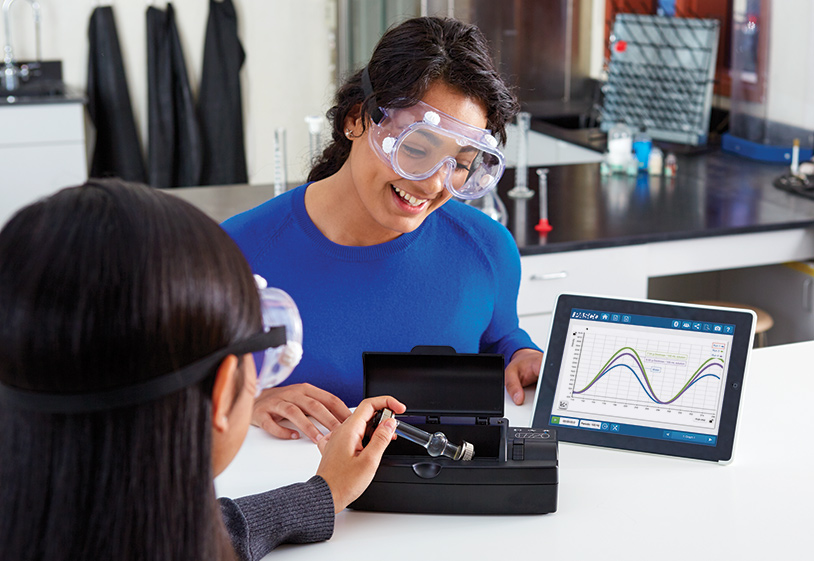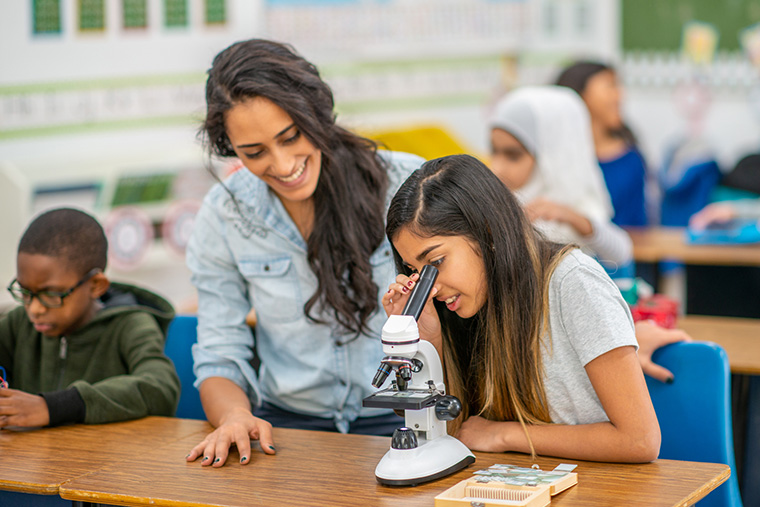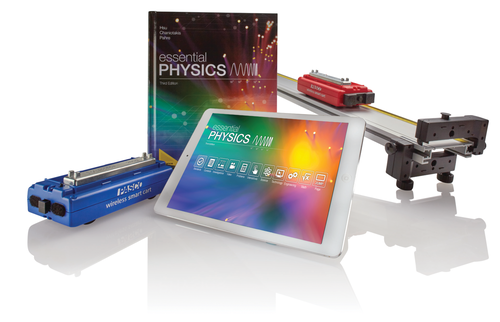
Finding the perfect science curriculum is a task many educators face. Choosing the right one can feel overwhelming, but this blog post offers guidance to help you evaluate your options and choose a program that suits your needs. We'll explore key aspects to consider when selecting a science curriculum, delve into popular choices, and highlight what makes a curriculum truly stand out.
Table of Contents:
- What to Look For in a Science Curriculum
- Popular Science Curriculums
- What are the Four Core Sciences?
- Science Curriculum: Choosing the Right Fit
- FAQs About Science Curriculum
- Conclusion
What to Look For in a Science Curriculum
With various options available, selecting the right science curriculum for your students’ needs is crucial. It can be overwhelming to think about the age group and learning styles of your students while also considering the teaching approach, the use of hands-on activities, and the availability of supporting resources. So, we’ve broken down the major considerations for you.
Alignment with Standards
Educators prioritize alignment with standards, especially the Next Generation Science Standards (NGSS). NGSS has gained immense support from respected scientific institutions and science-based businesses. This widespread acclaim is due to its focus on three-dimensional learning, with the dimensions including science and engineering practices, disciplinary core ideas, and crosscutting concepts. Alignment with NGSS gives educators confidence in the credibility of the science curriculum, as well as the ease in which it can integrate into their classroom. In a section below, we cover one NGSS-aligned homeschool curriculum, Sonlight.
Inquiry-Based Learning
Effective science curriculums often use inquiry-based learning, which is an approach that encourages students to ask questions, design investigations, gather and analyze data, and draw conclusions. Through inquiry-based learning, students actively participate in their learning rather than being mere receivers of information via lectures. This involvement cultivates critical thinking and problem-solving skills applicable beyond the classroom. One prime example of a curriculum that showcases inquiry-based learning is Amplify Science.

Hands-On Activities
Learning science is best done through experience, not just textbook memorization. That's why successful science curriculums provide hands-on activities that enhance the concepts being taught. By engaging in activities, students can visualize and truly grasp scientific principles.
Noeo Science for homeschool and PASCO’s Essential Physics and Essential Chemistry are examples of curriculum that exemplify this approach. They each offer kits with everything needed for immersive science investigations. Access to an eBook and online library of activities highlights the need to not just include hands-on activities, but to make them accessible and convenient for students and educators.
Teaching Tools
Wireless Temperature Sensor with Display (PS-4201)
The Wireless Temperature Sensor with Display is a must-have for any chemistry, biology, or environmental science course. Equally capable in the lab or field, the sensor eliminates the hassle of cables, reducing spills and improving safety.Supporting Resources
Look beyond the textbook when choosing a curriculum. Comprehensive programs are supported by a variety of resources. Consider engaging simulations and virtual labs. These tools allow students to experience complex scientific scenarios. Another resource to consider is detailed teacher's guides, which offer clear instructions and supplemental activities. Some programs, like Amplify and PASCO’s Essential Physics and Essential Chemistry, offer resources that expand upon the standard curriculum. Amplify’s resources include a comprehensive math webinar library and engaging phenomena-based learning opportunities, and PASCO’s Essential Curriculum also offers phenomena-based learning plus digital resources including animations, videos, and simulations.
Teaching Tools
Essential Physics (3rd Edition) Solution
This rigorous yet accessible textbook includes core physics topics that cover a complete year of instruction for General, Honors, AP®, and IB® physics courses. Essential Physics (3rd Edition) includes a student eBook with interactive media, award-winning physics equipment, analytical software, and more. Plus, the curriculum aligns with NGSS and your state standards.Popular Science Curriculums
Whether you are a homeschooling parent wanting a structured science curriculum or an educator researching options, recognizing that there isn't a one-size-fits-all solution is essential. Choosing a science curriculum often means identifying what fits your specific needs.
Sonlight Science Curriculum
The comprehensive, literature-based approach of the Sonlight Science Curriculum resonates with many families. A favorite among homeschoolers, Sonlight blends literature with scientific exploration. This blend creates a captivating journey through scientific discoveries, enabling children to engage with narratives that make learning informative and inspiring.
Discovery Education Science Techbook
The digitally-focused Discovery Education Science Techbook has become prominent in classrooms nationwide. Their Science Techbook program uses visuals and interactive elements to make science concepts come alive. Its virtual labs and interactive simulations appeal to tech-savvy learners, going beyond traditional classroom settings.
This digitally-focused curriculum integrates into existing Learning Management Systems. This feature is useful for educators who need tools to manage content, resources, data, and student progress. The Science Techbook has received recognition from The Every Student Succeeds Act (ESSA), earning Tier III and IV compliance status. This is based on independent, evidence-based studies conducted in districts nationwide. The studies demonstrated significant improvements in science proficiency across grade levels.
HMH Science Dimensions
The HMH Science Dimensions curriculum appeals to those seeking a hands-on, engaging experience. This program ignites a passion for exploration through interactive investigations, inquiry-driven activities, and well-designed materials. ScienceSaurus readers provide students in Kindergarten through 8th grade with a mix of age-appropriate scientific literature. This enhances their scientific understanding and nurtures a love of reading alongside the core curriculum. Teachers might find HMH's Coachly professional development tool beneficial.
McGraw Hill Inspire Science
With a dynamic, contemporary approach, the McGraw Hill Inspire Science curriculum allows students to explore real-world scientific phenomena. Students do this through interactive activities, stimulating discussions, and digital explorations. An important component for students in grades 6-8 is the Teen Health science curriculum. It offers age-appropriate comprehensive health education.
This curriculum motivates students by demonstrating the relevance of science in their daily lives. McGraw Hill offers Science Interactives, covering a wide range of subjects from physics to Earth science. These are designed for older learners.

OpenSciEd
OpenSciEd is an innovative, open-source science curriculum designed to engage middle school students in three-dimensional learning aligned with the Next Generation Science Standards (NGSS). The curriculum emphasizes inquiry-based learning, where students actively explore scientific phenomena through hands-on investigations, collaborative discussions, and evidence-based reasoning.
One of the key benefits for science educators is that OpenSciEd provides comprehensive, free resources that are classroom-tested and adaptable to diverse learning environments. It supports educators in fostering critical thinking, problem-solving, and scientific literacy, helping students develop a deeper understanding of core scientific concepts. Additionally, OpenSciEd's materials are continuously updated based on teacher feedback, ensuring they remain relevant and effective in promoting student engagement and learning outcomes.
What are the Four Core Sciences?
The core sciences refer to the fundamental areas of our understanding of the natural world. While science has many specialized branches, four stand out consistently: biology, chemistry, physics, and earth science. These areas cover a wide range of topics: living organisms, the properties of matter, the laws of motion and energy, and our dynamic planet.
Biology - The Study of Life
Biology examines the diversity of living organisms. This includes their functions, structures, and interactions with each other and their environments. The scope of biology is vast, including subfields such as genetics, ecology, microbiology, physiology, zoology, and much more.
Chemistry - Exploring the Building Blocks of Matter
Chemistry is centered on the nature of matter. It explores what matter is made of, how it changes, and the laws governing those transformations. Chemical reactions, atomic structure, and the different types of compounds are all aspects of chemistry. Chemistry includes specialized subsets such as inorganic chemistry, organic chemistry, biochemistry, quantum chemistry, and more.
Physics - The Science of Motion and Forces
Physics seeks to understand motion, forces, energy, and how matter interacts. It explains concepts like gravity, electricity, and magnetism. Young learners can benefit tremendously from hands-on investigations of force and motion, as much of physics—astrophysics, electromagnetism, aerodynamics, mechanics, and more—builds on these core concepts
Earth Science - Understanding Our Planet
Earth science focuses on the complexities of our planet. It encompasses topics such as rocks and minerals, weather patterns, and the study of oceans and continents. Subsets of earth science include geography, astrology, oceanography, meteorology, and more.

Science Curriculum: Choosing the Right Fit
When choosing a science curriculum, ask yourself these questions: What are my educational goals for my students (or child, if homeschooling)? Does this curriculum fit my teaching style? Am I ready to make any adjustments? Most importantly, does this program interest the students and make them eager to learn?
The right curriculum balances educational value, suitability for the learning environment, and a child's curiosity. Making a thoughtful selection paves the way for a successful and enjoyable learning journey.
FAQs About Science Curriculum
What is a science-based curriculum?
A science-based curriculum is research-based, so it’s grounded in scientific principles and methods. It incorporates inquiry-based learning, experimentation and hands-on learning, and evidence-based reasoning to guide students' understanding of scientific concepts.
What's the best homeschool science curriculum?
The ideal science curriculum depends on individual preferences, homeschooling methods, and the student's learning style and interests. Several programs, such as Sonlight and Noeo Science, are well-regarded. However, the best choice ultimately hinges on what fits your organization’s requirements for the school year, offers efficient methods for you to teach science, and enhances students’ learning experience.
What should a science curriculum include?
An effective science curriculum includes alignment with standards, inquiry-based learning, interactive investigations and hands-on experiments, comprehensive teacher resources, engaging supplemental activities and assessment opportunities, and the ability to foster critical thinking, problem-solving, and a deeper understanding of scientific principles.
Conclusion
Science curriculum is more than just textbooks and lesson plans. It opens a door to curiosity and exploration that can start as early as grades k and extend to middle school and high school.
By choosing a science program carefully for your grade level and promoting a dynamic, curiosity-driven approach to learning, we can inspire a love for science that could lead to scientific worldviews and future innovations.



